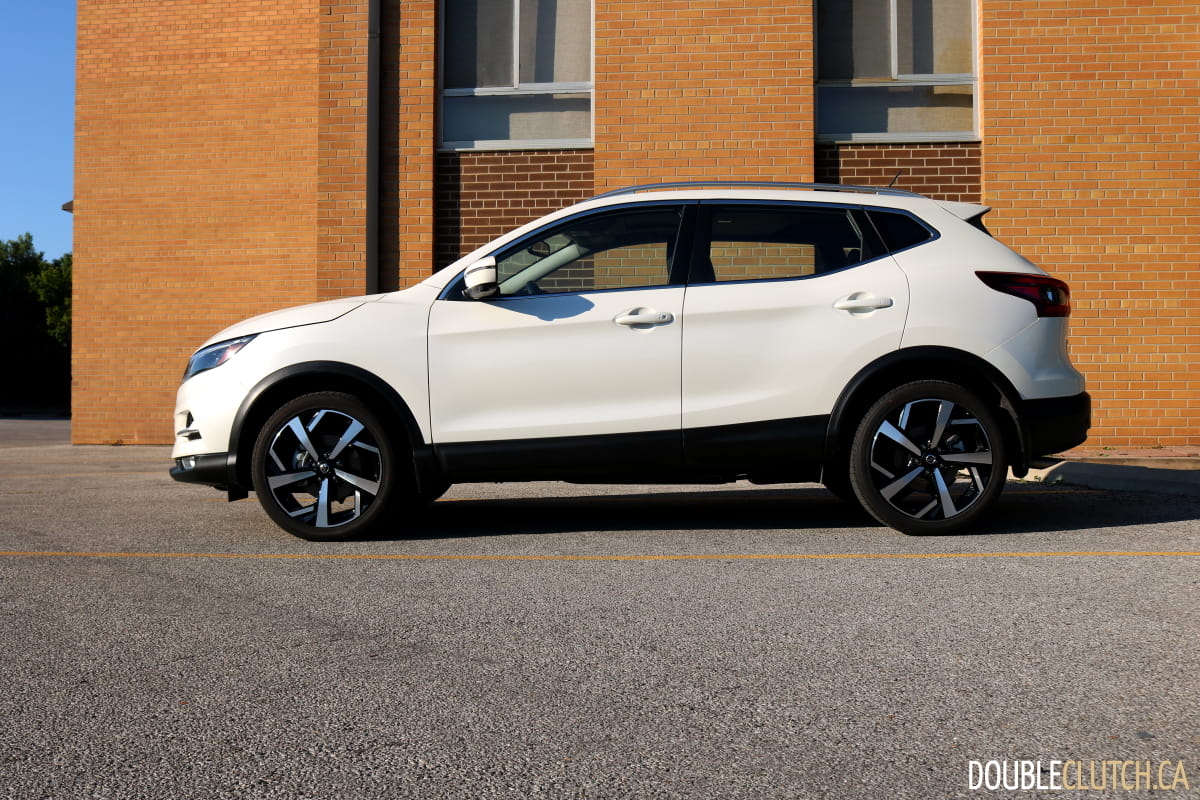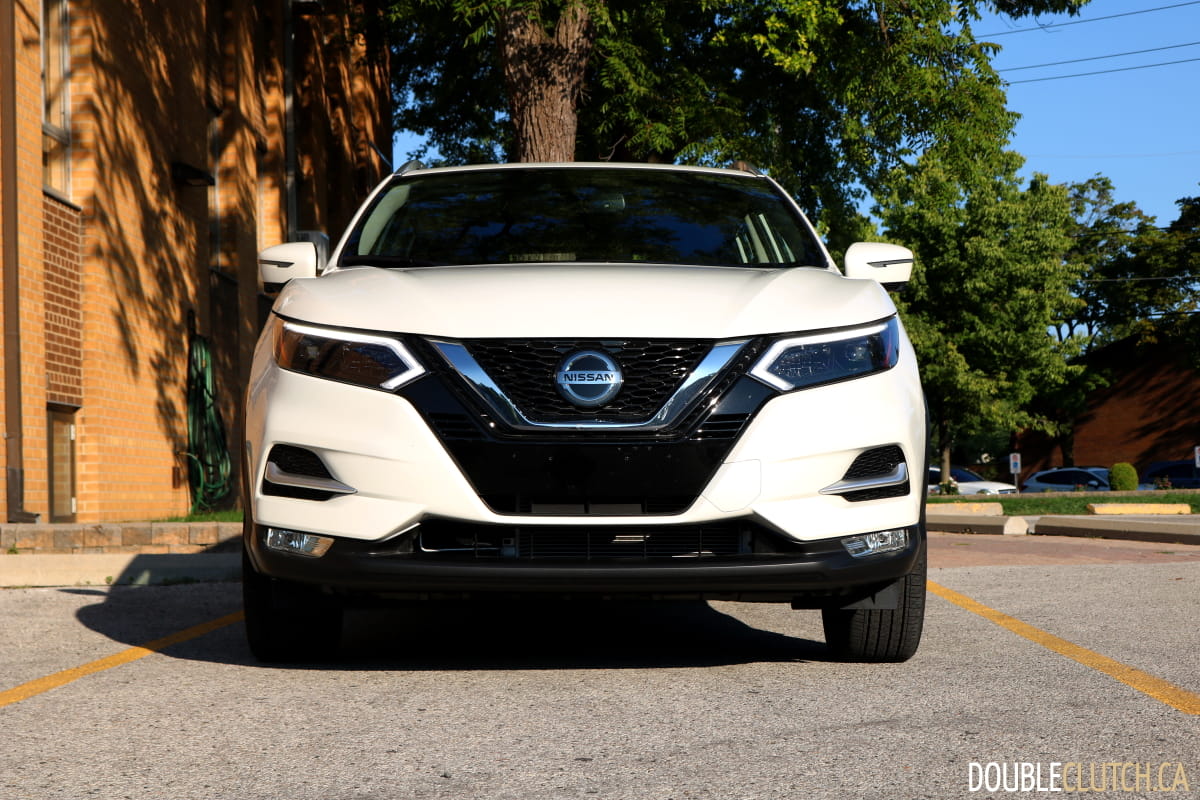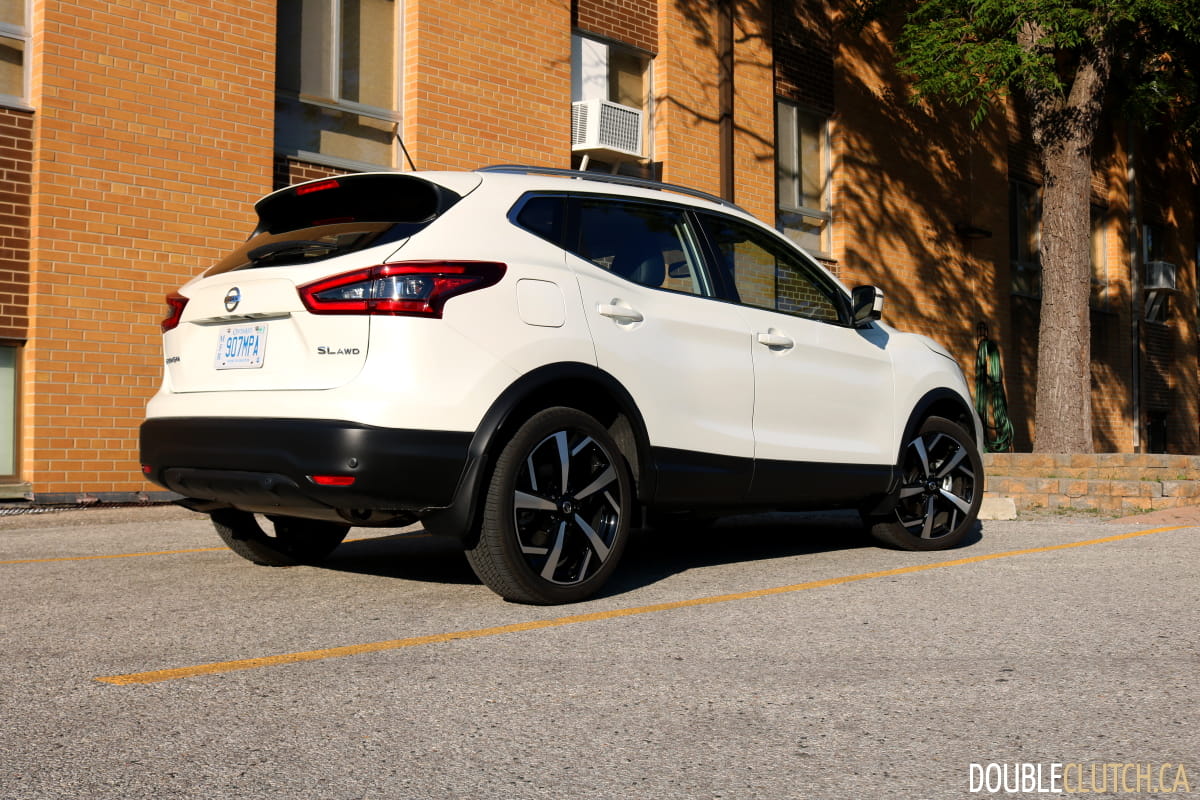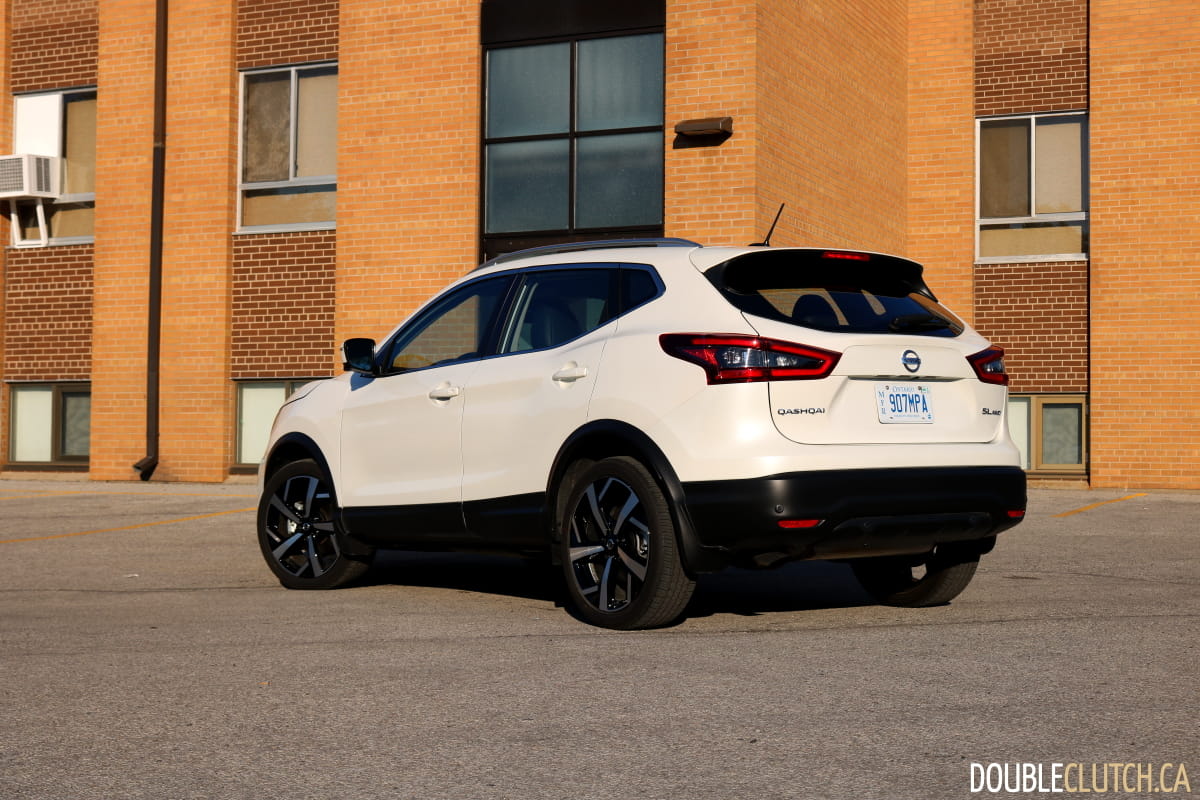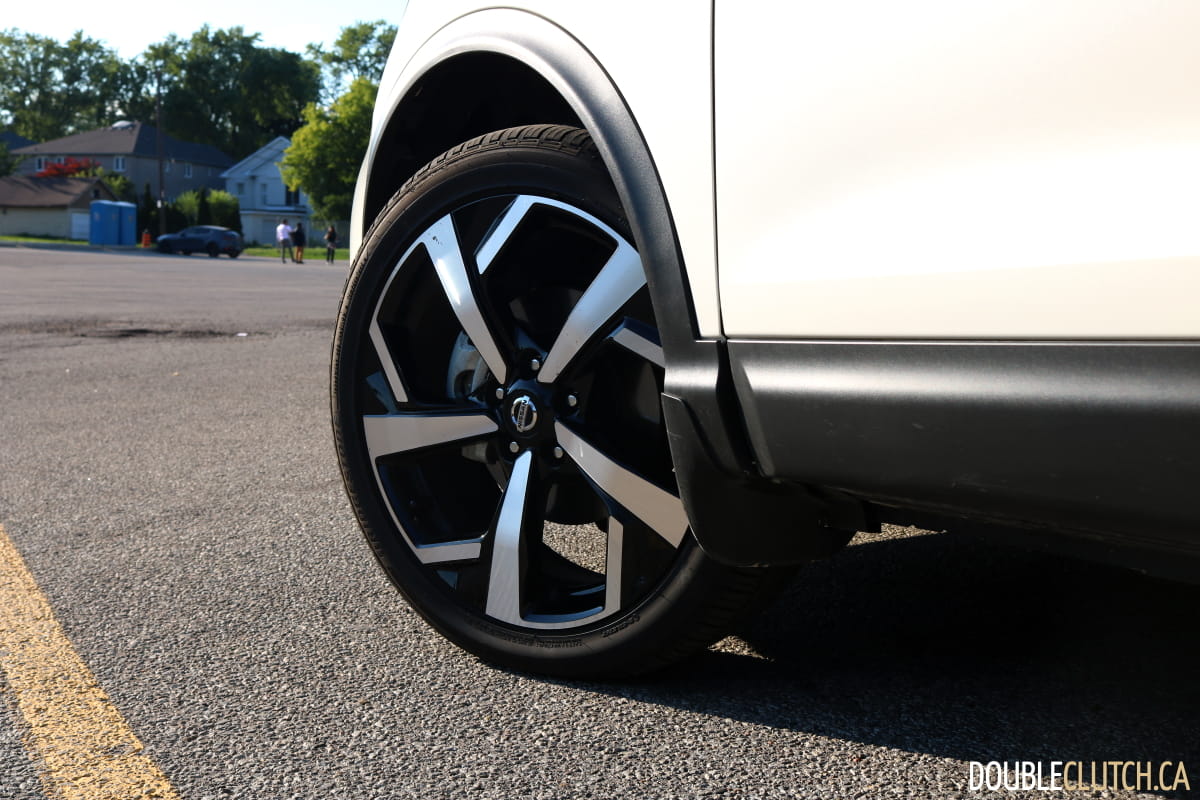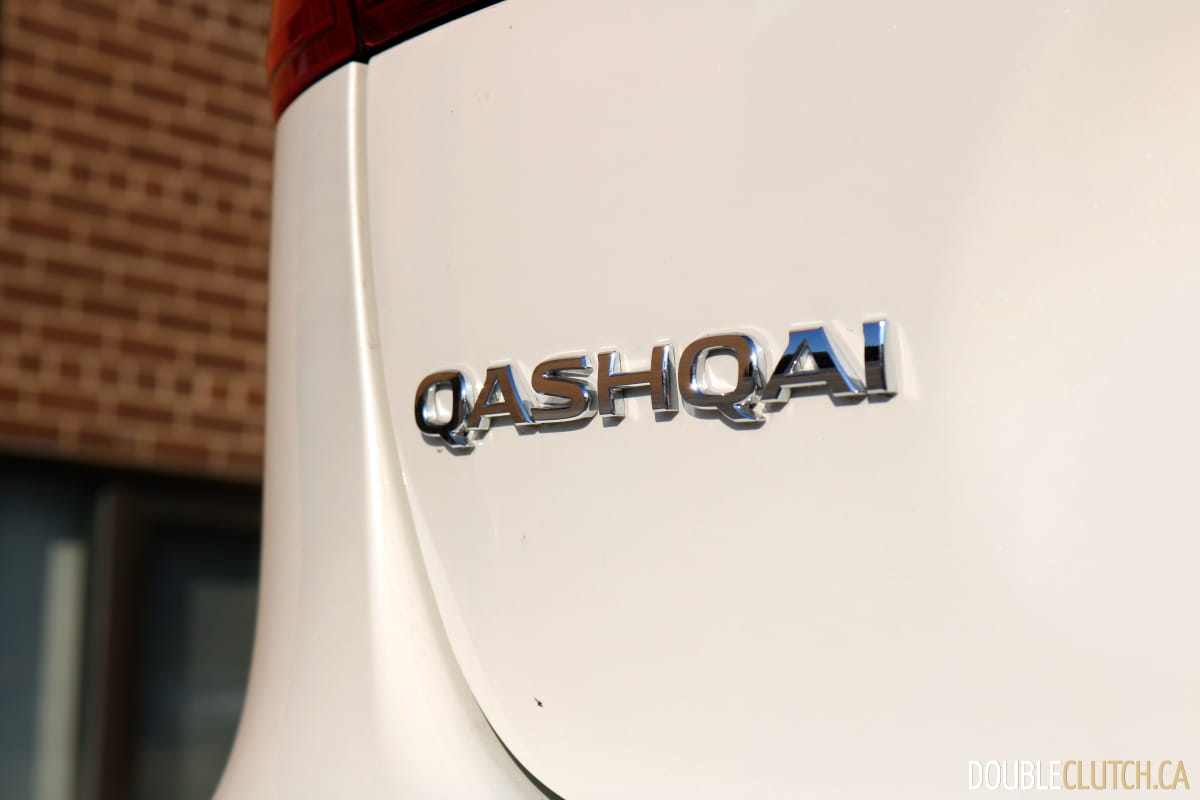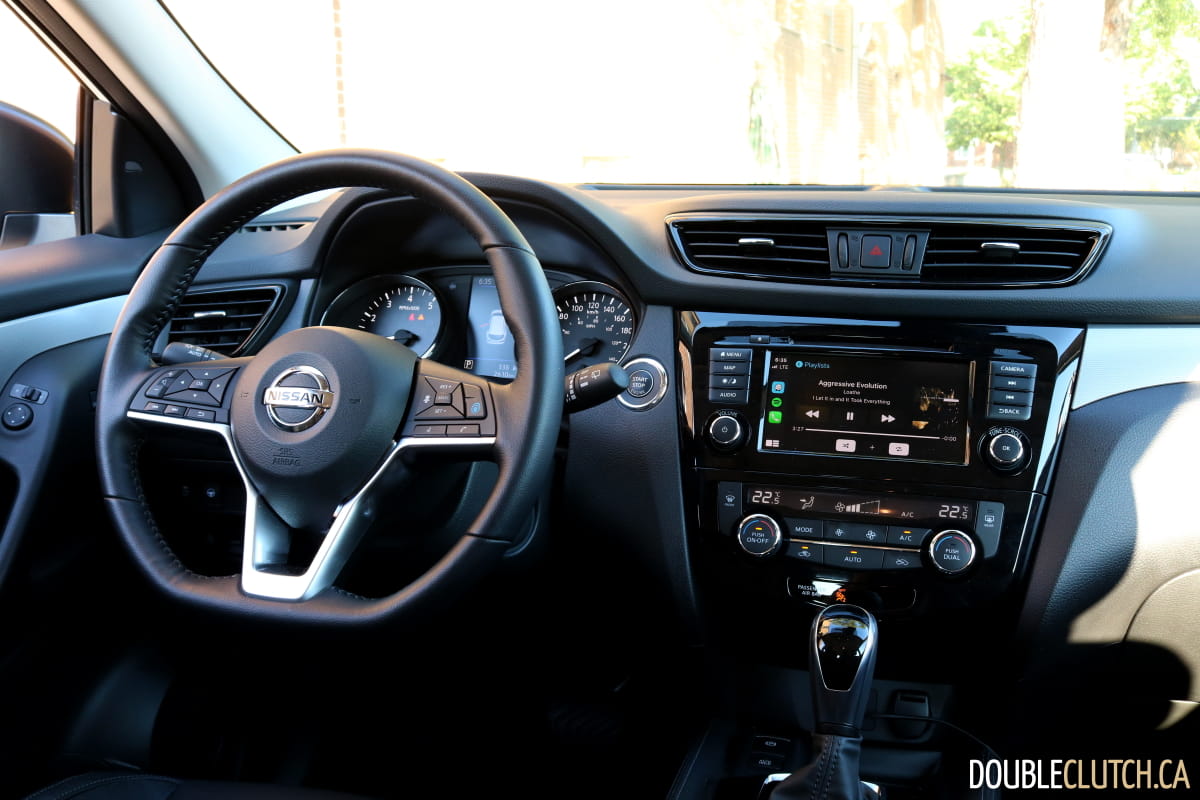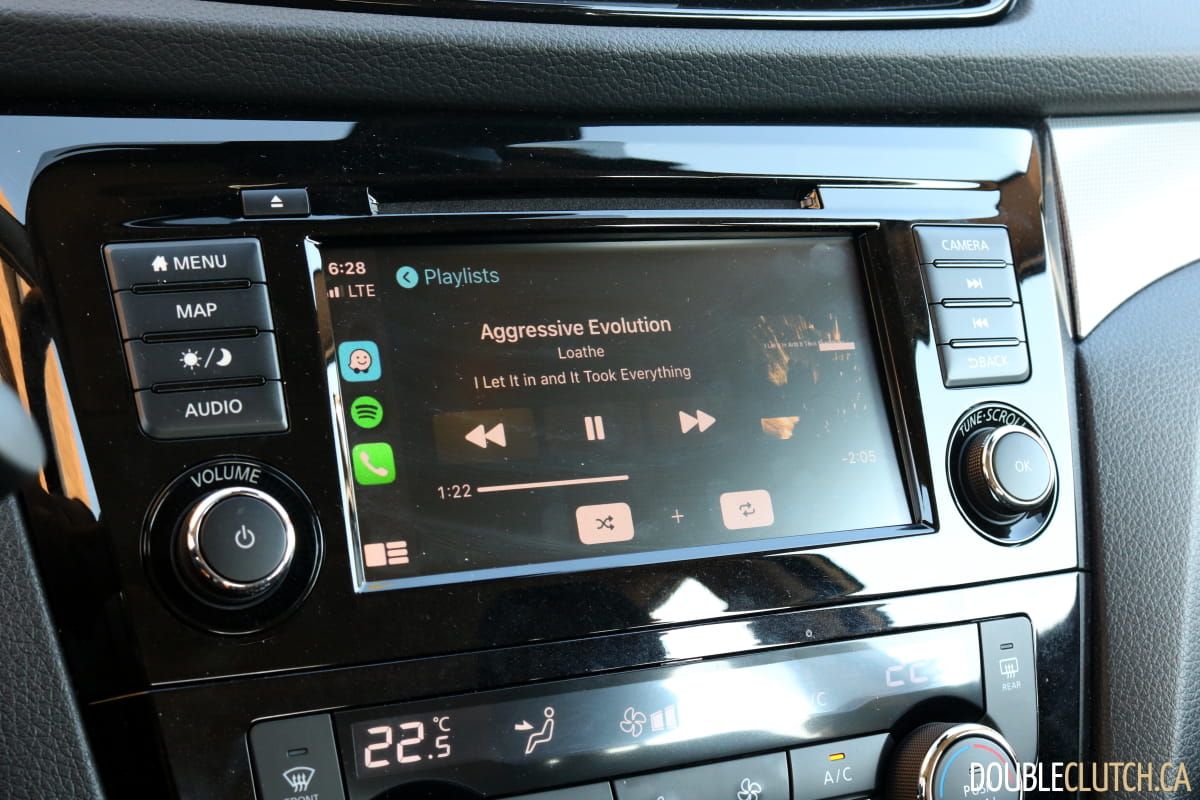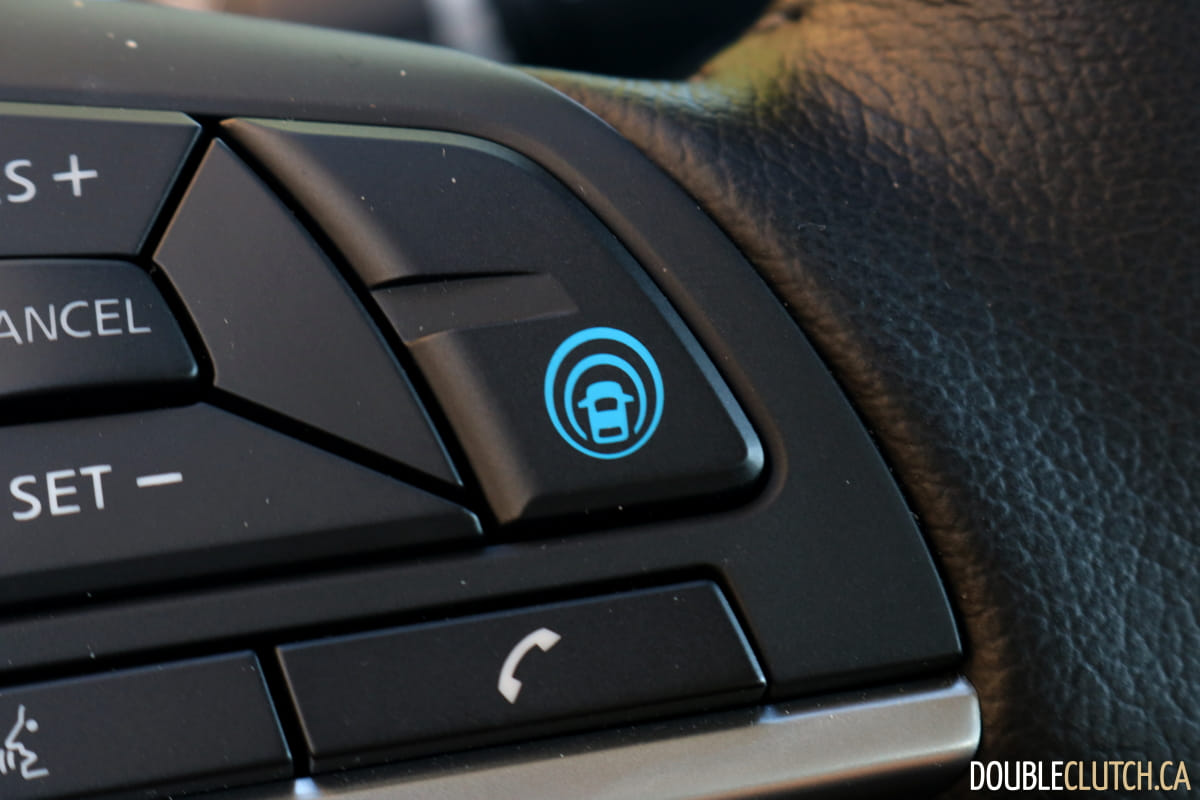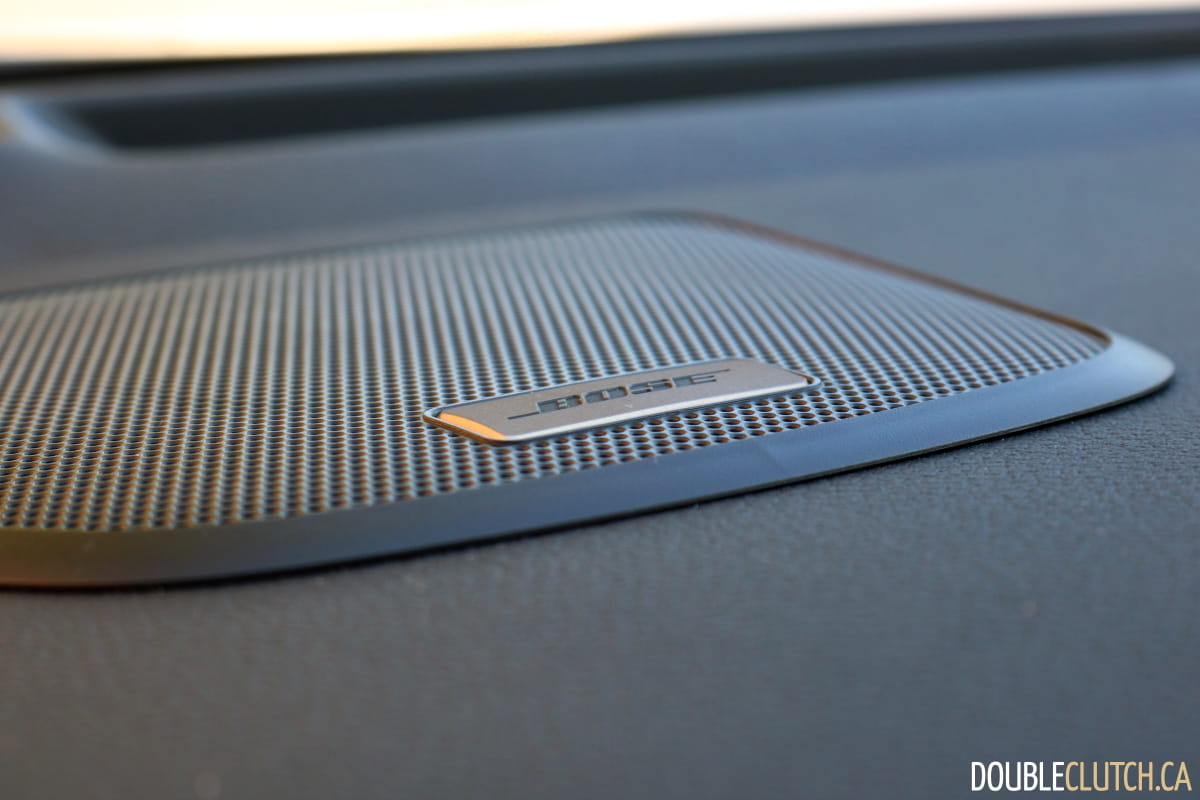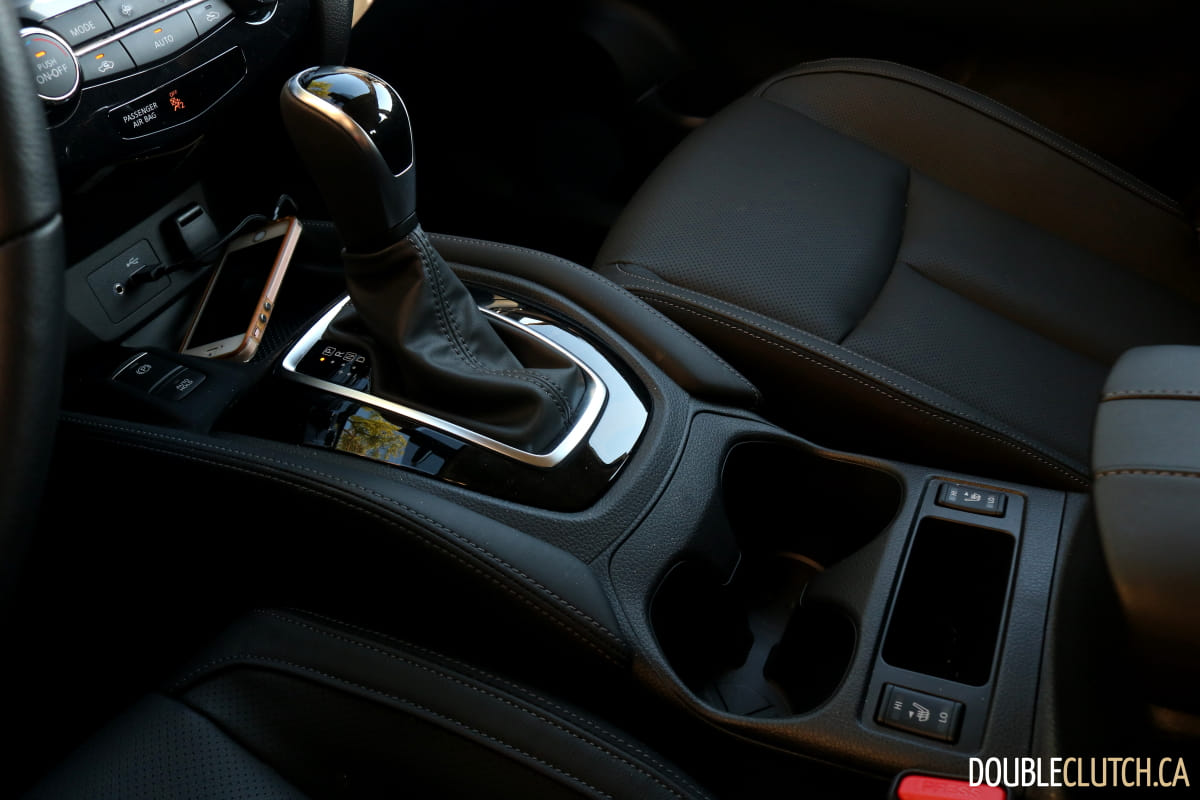Nissan launched the Qashqai in Canada just three short years ago but it’s already been refreshed. What gives? Well, here’s a little secret – the current Qashqai is actually almost seven years old, being released in most markets for the 2014 model year. So does it have the chops to keep up with the latest and greatest subcompact crossovers? Let’s find out with this 2020 Nissan Qashqai SL Platinum AWD.
On the outside, the revamped Qashqai features a more dramatic version of Nissan’s corporate V-Motion grille, slimmer headlights, a new front bumper and new taillights with pronounced boomerang-style elements. While these are fairly standard changes for any mid-cycle refresh, they greatly update the Qashqai thanks to its rather good overall body design. The bulging front and rear fenders are very en-vogue and give shape while the two main character lines on each side of the car help to create some interesting surfacing contours.
To accentuate those aforementioned fenders, the lower cladding and the window line sweep upwards towards the rear of the Qashqai while the roofline slopes down towards the rear. Relatively simple and standard design touches, but they all work together cohesively to make the Qashqai look pleasant without seeming overly fussy. Kudos go to the LED headlamps fitted to our test car which offer a country mile of beam throw and razor-sharp beam cut-off to prevent the Qashqai from dazzling other motorists. It’s a shame they’re only available on the top trim as good headlights are an essential safety feature.
One thing that sets the Qashqai apart from the competition is driving position adjustability. The adjustable steering column’s tilt and telescoping range is above average and the seat height adjusts from very low to “hey look, I’m a NBA player” high. No matter what driving position is chosen, the shifter remains in easy reach but the indicator stalk is just a touch too far away from the wheel to quickly activate the three-blink lane change function. More defined detents would make a big difference here.
Another mildly infuriating ergonomic snafu is the phone cubby, which is too small to hold anything other than a Motorola RAZR. This could have been enlarged if the SL’s electronic handbrake controls were placed anywhere else in the cabin, but unfortunately they intrude on this rather valuable space. This may be a non-issue on lower trim levels which use a pedal-style parking brake instead of an electronic one. While there is another USB port inside the well-sized cubby under the armrest, it’s only for charging purposes.
Happily, the big stuff on the inside of the Qashqai is all fairly well done. The front seats are reasonably comfortable, the steering wheel feels nice to hold and the contours of the dash are fairly interesting in person. Worth particular mention are the patterned silver trim pieces that are very reminiscent of those on pre-facelift Infiniti Q50s (reviewed here), a good design element to swipe from a luxury car in order to jazz up the interior. Rear seat space is reasonable for the segment, although rear seat thigh support is virtually non-existent.
Cargo space is slightly above average for the segment, and Nissan’s Divide-N-Hide configurable false cargo floor does a good job at keeping shopping from flying about so long as the rearmost panel is flipped upwards. While we would have liked to see two-tier storage capability, the ability to store the cargo cover under the false floor is very much appreciated. Our tester’s dual-zone automatic climate control provided bone-chillingly cold air conditioning which made our skeletons very comfortable during the testing period’s heat wave.
Tech-wise, it’s not hard to believe that the current Qashqai launched in 2013 for most world markets. While it does have Apple CarPlay, Android Auto and a digital screen in between the speedometer and tachometer, it misses the mark on details compared to newer competitors. For instance, there is no digital current speed readout in the gauge cluster. While that’s largely inconsequential thanks to the clearly-marked analog speedometer, it is mildly annoying.
Also mildly annoying is the size and resolution of the infotainment screen. The seven-inch touchscreen trails most competitors’ screens in size and there’s noticeable pixel blur around icons and elements. The available birds-eye camera also isn’t crisp enough to be competitive at this price point, although it’s still a nice feature to have. One thing that the Qashqai does get right is the option to match the colour of the virtual Qashqai in the gauge cluster screen to the exterior colour of the actual Qashqai. Many more expensive cars lack this feature despite it being a fairly simple addition with zero added hardware cost.
Audio fans know “no highs, no lows, must be Bose” off by heart, but the Qashqai’s optional Bose system inverts that saying completely. While Chief Keef tracks are reproduced with enough clean bass to render the rearview mirror useless and the tss of hi-hats come across crisply and clearly, there just isn’t any midrange. Bad news for fans of metalcore, as the Qashqai’s Bose system makes Greyhaven sound like it’s being played through mid-2000s iPod earbuds. Spotify audio over Apple CarPlay is also weirdly quiet, although there’s enough wattage here to overpower highway road noise.
Happily, the Qashqai is quite decent to drive. Although the steering is over-boosted for easy urban manoeuvring and stone-cold when it comes to any semblance of feel, it is reasonably quick and fairly accurate. Pair that with a rather composed chassis and the Qashqai is very confidence inspiring, if not exactly fun. While the 2.0-litre twin-cam inline-four only packs 141 horsepower and 147 lb-ft. of torque, aggressive throttle mapping and diligent tuning of the CVT transmission help the Qashqai feel zesty off the line, great for the cut-and-thrust of downtown traffic.
The initial fizziness of the powertrain goes noticeably flat approaching highway speeds but that’s to be expected with such little power in a vehicle that weighs 1,500 kilograms. Our particular tester came equipped with Nissan’s intelligent all-wheel-drive, a rather deft system that’s more predictive than most of the slip-and-grip drivetrains available in the subcompact crossover segment. Setting off from a stop, it transmits fifty per cent of torque to the rear axle. Once up to speed, it goes back to being essentially front-wheel-drive for efficiency, although the torque split can be locked 50:50 by hitting a switch to the left of the steering wheel.
Ride quality is a bit jarring and indicative of the Qashqai’s inexpensive underpinnings and general age. This thing started production for most markets right around when memes were starting to take off and it shows with subpar body control and minor impacts shaking their way up through the floor. Fuel economy is also a bit of a sticking point, as the Qashqai returned 8.8L/100km during our week of predominantly highway driving, noticeably short of the 8.4L/100km combined quoted by the government.
This particular Qashqai came equipped with the ProPilot Assist driving assistance suite. Like many systems, it’s overall a bit of a mixed bag. System disengagement is rather quick, lane-keep doesn’t work in forked right lanes or in areas with faded lane markings and the blind-spot warning lights in the pillars are easily washed out in sunlight. That being said, traffic jam assistance is simply marvellous and the whole system usually speeds the Qashqai up and slows it down as smoothly as a human driver, even with the following distance set to minimum. We did notice a little ping-ponging between lane markers but no more than from most systems on the market.
In the end, the Qashqai’s a middle-of-the-pack subcompact crossover. Its only real sin is simply being outdated. With an as-tested price of $34,398 for the 2020 Nissan Qashqai SL Platinum it is expensive, although a loaded Jeep Renegade or Chevrolet Trailblazer would sticker for more than that. Most of the Qashqai’s target market would be better off with its less expensive, more fuel-efficient little brother the Kicks. While a perfectly fine vehicle, the Qashqai still has noticeable room for improvement and we’re looking forward to seeing Nissan step its game up with the next generation.












